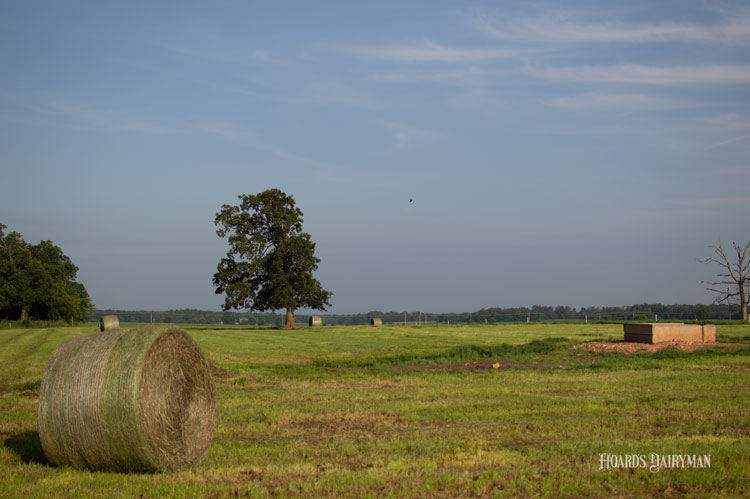
Even in the northern U.S. climates, we are now well into forage harvesting season.
With that comes the acrobatic challenge of getting forage cut, dried, and put up between rainstorms that never seem to be in the forecast until the mower is in the field. In the world of hay and haylage production, often the harvesting goal is to incur the least damage.
That’s because hay standing in the field is at its greatest nutritive value before it’s cut. As described by Ohio Extension Educator Rory Lewandowski, quality only disappears as the hay crop dries down.
“Harvesting high-quality forage is dependent upon minimizing biological and mechanical harvest system losses,” explained Lewandowski.
That starts at the beginning, which is harvesting at a proper moisture level. Two important factors impact forage quality biologically — plant maturity and plant respiration after mowing, the extension educator explained in a recent Buckeye Dairy News article.
For every day of plant maturity after the forage plant moves in its reproductive growth stage, a significant amount of quality is lost. In early cuttings, that can be as much as 4 Relative Feed Quality (RFQ) points per day. In July and August, that number is lower but still formidable.
Plant respiration, which is the normal use of starch and sugar by the plants, continues in a harvested crop until its moisture level falls below 60 percent. On average, plant respiration is responsible for 4 to 5 percent of dry matter loss in the harvested crop. The quicker this dry down can occur, the more quality that is preserved in the plant.
Lewandowski reminded haymakers of two management decisions that aid in quick dry down. Firstly, cutting early in the day maximizes sunshine and drying conditions. Secondly, spreading the forage in a wide swath to expose more leaves to greater drying conditions.
Lewandowski left the readers with these quality parameters for review. Forages harvested for baleage should be put up at 45 to 55 percent moisture and wrapped with six or more layers of plastic. Forages put up as haylage should be harvested between 55 and 62 percent moisture, chopped at the 3/8 inch theoretical length of chop, and packed to achieve 44 pounds per cubic foot of silage. Finally, dry hay bales should be around 13 to 15 percent moisture for long-term storage and stability without preservatives.








